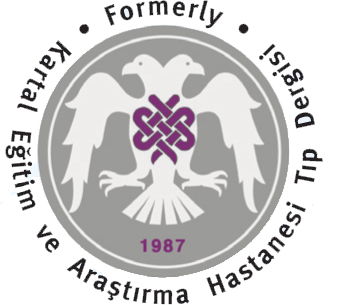Management of Persistent Hyperparathyroidism after Renal Transplantation
Meral Meşe, Ergün ParmaksızDepartment of Nephrology, Kartal Dr. Lütfi Kırdar City Hospital, İstanbul, TurkeyINTRODUCTION: Even after successful kidney transplantation, persistent hyperparathyroidism (HPT) with hypercalcemia is common, which is considered to be a risk factor for progressive bone loss, fractures, tubulointerstitial calcifications, vascular calcification, and development of graft dysfunction. The subtotal parathyroidectomy (PTX) is the standard treatment, but currently, it has been replaced by the calcimimetic cinacalcet. The aim of this single-center, retrospective study was to compare the long-term effects of PTX and cinacalcet on calcium, phosphorus, and parathyroid hormone (PTH) levels, as well as graft function in renal transplantation patients.
METHODS: The study population consisted of 24 patients followed between January 2004 and December 2020, 13 of whom underwent PTX and 12 of whom take cinacalcet therapy. The surgical group and the medical treatment group were compared. A control group with similar characteristics in terms of age, gender, transplant time, and kidney donor was formed, and the results were also compared with this group. The median PTH, calcium, phosphorus, creatinine levels, and eGFR values were recorded before/after PTX and cinacalcet therapy.
RESULTS: There was nonnegative effect of both PTX and cinacalcet groups on long-term and short-term allograft functions compared with control groups. Allograft functions were similar in comparison between PTX and cinacalcet groups.
DISCUSSION AND CONCLUSION: In conclusion, both cinacalcet treatment and PTX were found to be similarly effective and safe in reducing intact PTH and normalizing serum calcium in renal allograft recipients with hypercalcemia due to persistent HPT.
Böbrek Nakli Sonrası Kalıcı Hiperparatiroidizm Yönetimi
Meral Meşe, Ergün ParmaksızKartal Dr. Lütfi Kırdar Şehir Hastanesi, Nefroloji Bölümü, İstanbul, TurkeyGİRİŞ ve AMAÇ: Başarılı böbrek naklinden sonra bile, ilerleyici kemik kaybı, kırıklar, tubulointerstisyel kalsifikasyonlar, vasküler kalsifikasyon ve greft disfonksiyonu gelişimi için bir risk faktörü olarak kabul edilen hiperkalsemi ile kalıcı hiperparatiroidizm (HPT) yaygındır. Subtotal paratiroidektomi (PTX) standart tedavidir, ancak şu anda bunun yerini kalsimimetik sinakalset almıştır. Bu tek merkezli, geriye dönük çalışmanın amacı, böbrek transplantasyonu hastalarında PTX ve sinakalsetin kalsiyum, fosfor ve paratiroid hormon (PTH) düzeyleri ve greft fonksiyonu üzerindeki uzun vadeli etkilerini karşılaştırmaktır.
YÖNTEM ve GEREÇLER: Çalışma popülasyonu, Ocak 2004 ile Aralık 2020 arasında takip edilen, 13ü PTX uygulanan ve 12si sinakalset tedavisi alan 24 hastadan oluşuyordu. Cerrahi grup ve medikal tedavi grubu karşılaştırıldı. Yaş, cinsiyet, nakil zamanı ve böbrek vericisi açısından benzer özelliklere sahip kontrol grubu oluşturulmuş ve sonuçlar yine bu grupla karşılaştırılmıştır. Ortalama PTH, kalsiyum, fosfor, kreatinin düzeyleri ve eGFR değerleri PTX ve sinakalset tedavisi öncesi/sonrası kaydedildi.
BULGULAR: Hem paratiroidektomi hem de sinakalset gruplarının uzun dönem ve kısa dönem allogreft fonksiyonları üzerinde kontrol gruplarına göre negatif etkisi yoktu. Allogreft fonksiyonları paratiroidektomi ve sinakalset grupları arasında benzerdi.
TARTIŞMA ve SONUÇ: Sonuç olarak, hiperparatiroidizm nedeniyle hiperkalsemisi olan renal allogreft alıcılarında hem sinakalset tedavisinin hem de paratiroidektominin intakt PTHyi azaltmada ve serum kalsiyumunu normalleştirmede benzer şekilde etkili ve güvenli olduğu bulundu.
Manuscript Language: English



















